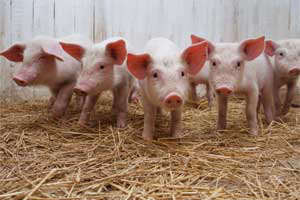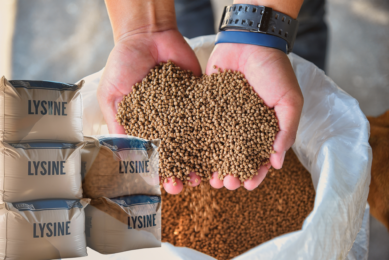Research: Amino acids can help reduce piglet mortality

Adding bioactive amino acids to the feed of pregnant sows may save the lives of many newborn piglets. A new research project looks at the feasibility.
Researchers from Aarhus University have started a new project that can save the lives of many piglets. The researchers will study whether a small change to the feed for pregnant sows can have a positive effect on piglet mortality.
The sad statistics reveal that nearly 25% of all the pigs born in Denmark die within the first few hours after birth. The good news is that it may be possible to do something about it so that more of them survive.
Litter size
In the last 20 years the average litter size in Danish pig production has risen from 13 to 16 piglets. Unfortunately piglet mortality has also risen in the same period, from 17% to nearly 25%. This means that nine million piglets die every year in Denmark. Besides being costly for the farmer, the high mortality is also associated with ethical and animal welfare problems.
The survival of the piglets depends of a number of factors. This means that there are many handles that can be tweaked to improve their chances of survival. One of the handles is the feeding of pregnant sows. In the new project at Aarhus University, the researchers will look at whether the addition of bioactive amino acids to the sows’ diet can reduce the high piglet mortality.
The smallest pigs are most at risk
Particularly the smallest pigs in the litter suffer a high mortality rate. Senior scientist Niels Oksbjerg, who is the leader of the new project, said: “There is a need to increase the birth weight of the smallest pigs and improve their chances of survival in the first few critical days.”
The bioactive amino acid is a non-essential amino acid, which means that it is not vital. Via certain processes it can, however, boost the growth in utero and likely increase the production of colostrum and milk, resulting in larger and more robust piglets at birth and a higher perinatal nutrition with better daily postnatal weight gain.
The bioactive amino acids are converted to nitrogen oxide which increases the flow of blood.
Oksbjerg added: “Our hypothesis is that the increased flow rate will lead to an increased supply of blood across the placenta and to the udder and that this will increase foetal growth giving rise to better nutrition in the lactation period. The increased supply of nutrients will increase the number of muscle fibres and the birth weight of the smallest piglets in the litter.”
Positive effect
If it turns out that the addition of bioactive amino acids to the feed for the sows has a positive effect on piglet mortality, it will be a solution that will be easy to implement on the farm.
Oksbjerg said: “It will improve both animal welfare and the farmer’s economy.” He will be starting the project first thing in the new year.
The project is a collaboration between the Department of Food Science and the Department of Animal Science and has received five million DKK from The Danish Council for Independent Research – Technology and Production.











